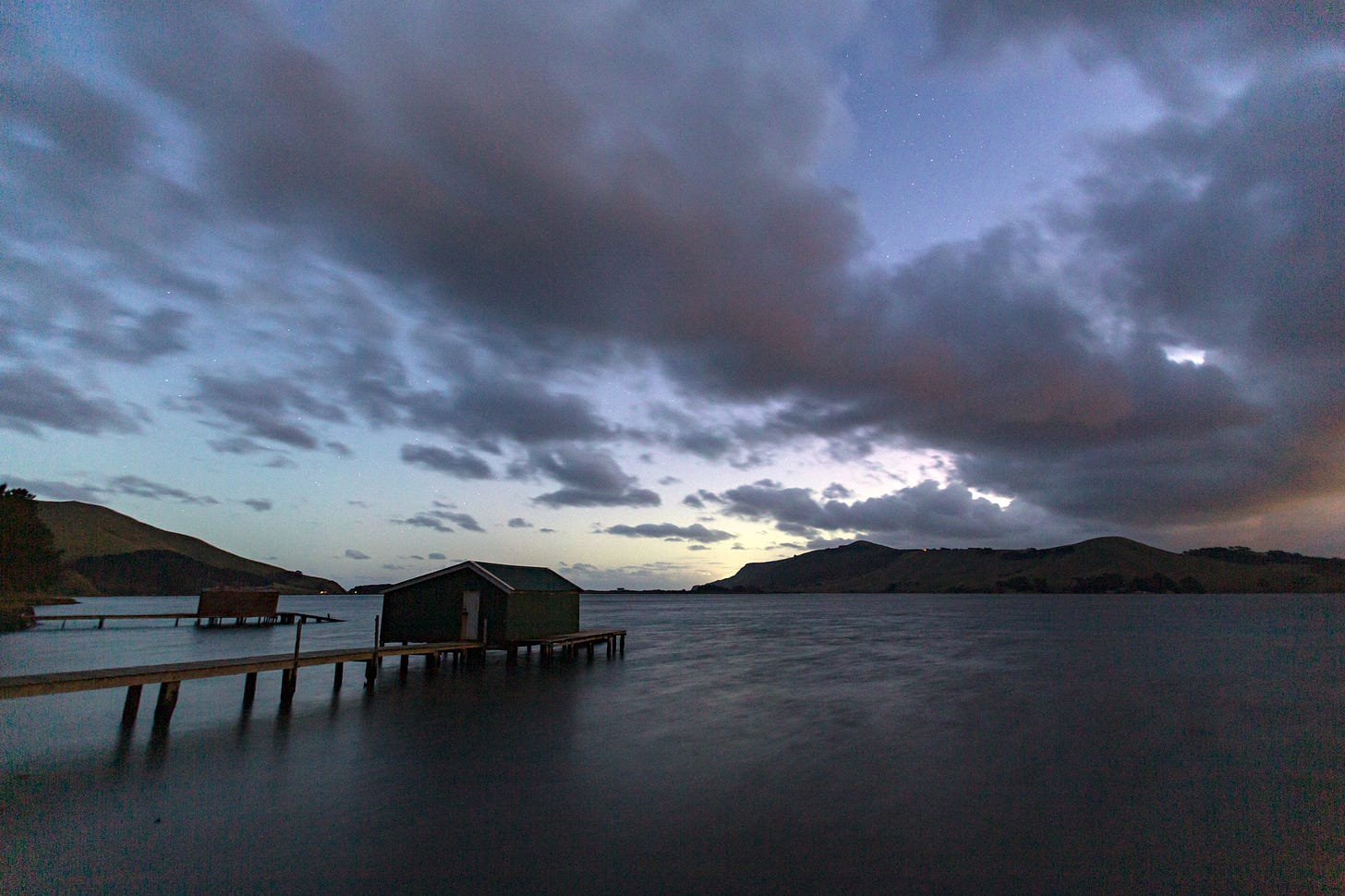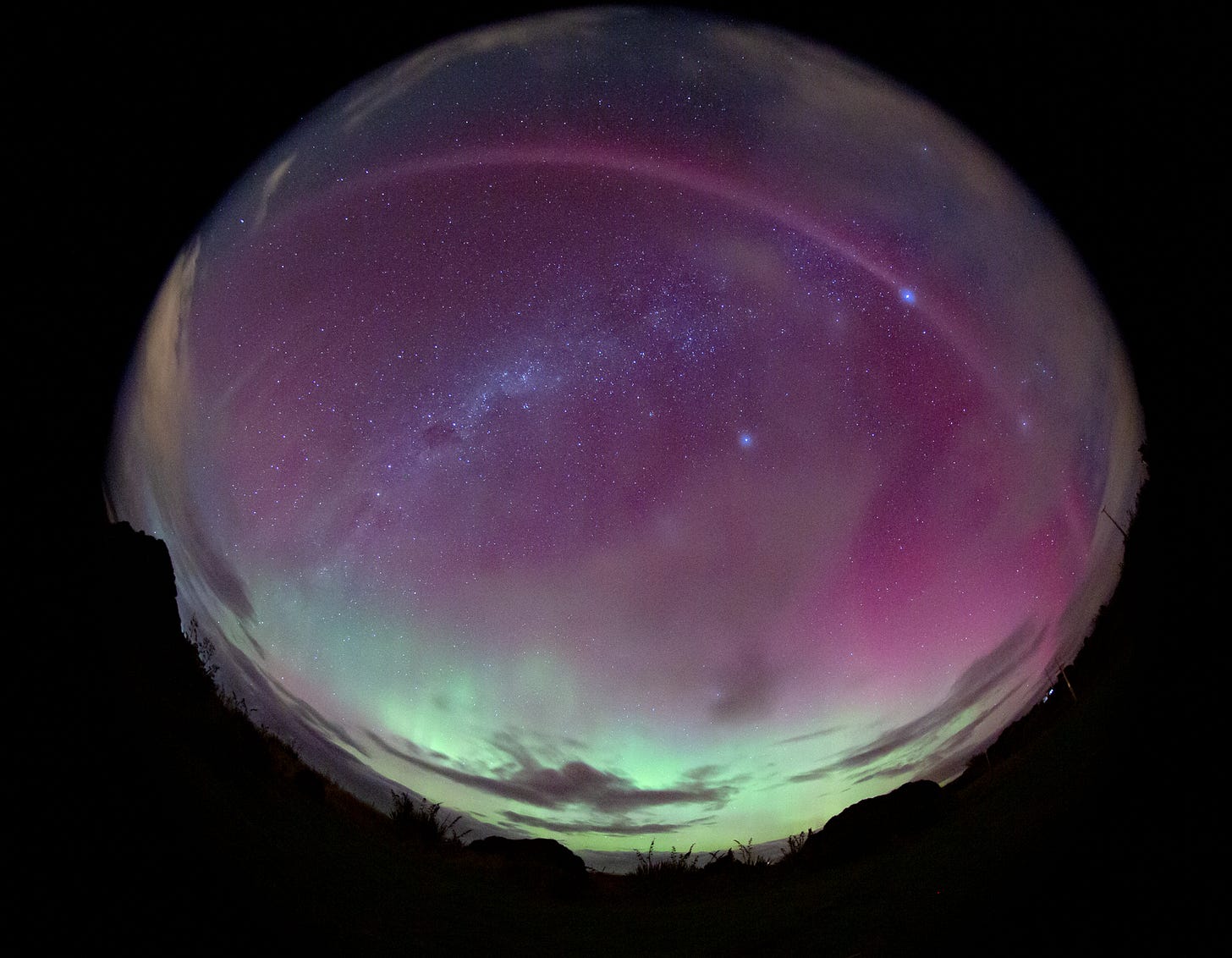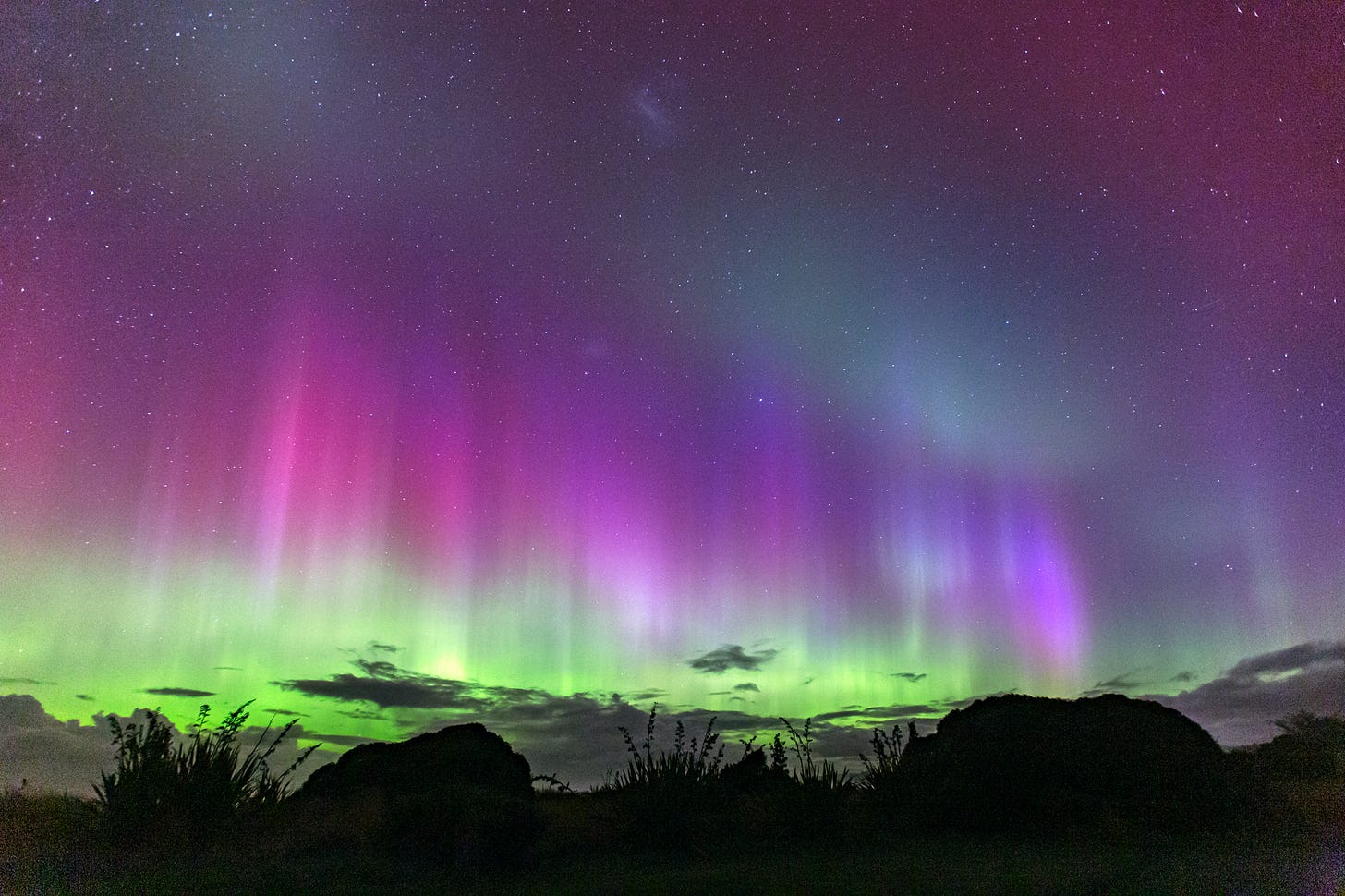The merest hint of an aurora compels me to fill my car with cameras and head out into the night. That was the situation on the 17th March 2015. With turbulent geomagnetic forces creating the prospect of the strongest aurora in years, it was with massive excitement that I set off to chase the southern lights on a warm autumn night.
I was not to be disappointed.
My go to observing location for aurora chasing is Hoopers Inlet, a short ten minute drive from my home.
As Dunedin’s student population partied, I set up my cameras on the Northern shore of the inlet. I shot off a couple of pictures in fading light. My heart began to beat faster because I could definitely see some green to the south. However, much to my alarm, a thick layer of clouds began to form over my observing site. Should I stay and risk missing the display or should I go try and find clearer sky elsewhere? I decided to go. I threw my cameras back into the car and set off.
In fading twilight I sped south, gaining a speeding ticket en route from a somewhat aurora sceptical traffic policeman for my troubles. I eventually found clear sky near Brighton. Even before my eyes adjusted to the darkness, I could see that the southern horizon was ablaze with bright colourful auroral beams. I set up my cameras, gasping in awe at the beautiful aurora to the south.
Glancing upwards I noticed something weird going on overhead. The sky was red. “That’s not normal” I thought to myself. I attached a wide angle “fisheye” lens and initiated a sequence of photographs with a second camera.
Unbeknown to me back in 2015, that series of images recorded something which had never been seen before. It led, last week, seven years after the event, to a publication in the august scientific journal Geophysical Research Letters with me as the second author.
The paper’s title, “Rainbow of the Night: First Direct Observation of a SAR arc evolving into STEVE” is a reference to the name given to the aurora by Kāi Tahu: Ngā Kahukura ō Hine Nui te Po (Rainbow of the Goddess of the Night).
My pictures captured the evolution of a broad red arc, known to researchers as a Stable Auroral Red (SAR) arc into a thin white-mauve arc, otherwise known as Strong Thermal Emission Velocity Enhancement (STEVE). Although these two arcs may resemble aurora, they are not produced by the same physical process. It turns out that current theories and models are unable to reproduce or explain these observations.
My second camera (a Canon 6D) had a relatively wide angle (16-35mm F2.8) lens and with short exposures I hoped to use it to capture high resolution pictures of the display. I was not disappointed; with exposures as short as 2 seconds I was able to record incredibly detailed images which revealed many fascinating features and some extraordinary colours.
Visually, the St Patrick’s day aurora was extraordinary. Looking to the south my eyes could pick out a number of distinct green auroral arcs that appeared to pulse, with beams rapidly moving along the arcs. Despite appearing to flash across the sky very quickly, the bright white auroral patches were also easy to see with the eye.
While, appropriately for St. Patricks Day the green colour was easy to see, my pictures of the auroral storm feature many pink, red and violet features, whose colour I could not discern with my eyes. Where the camera saw pink or red, my eyes which are nowhere near as sensitive just saw a grey or white.
The night of St Patricks Day 2015 will linger long in my memory. I got to witness the most magnificent display of the Aurora Australis I have yet seen from New Zealand. After returning home in the early hours of 18th March, I created a timelapse video of the event which I uploaded to my YouTube channel. You can see a high resolution version of it below.







